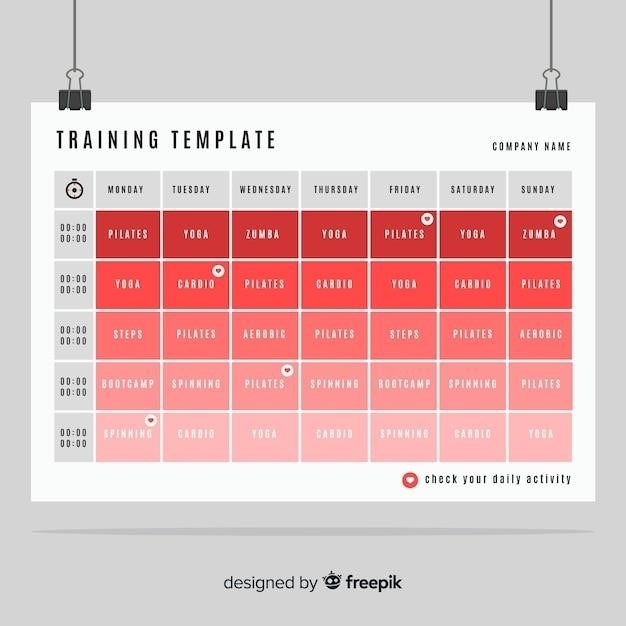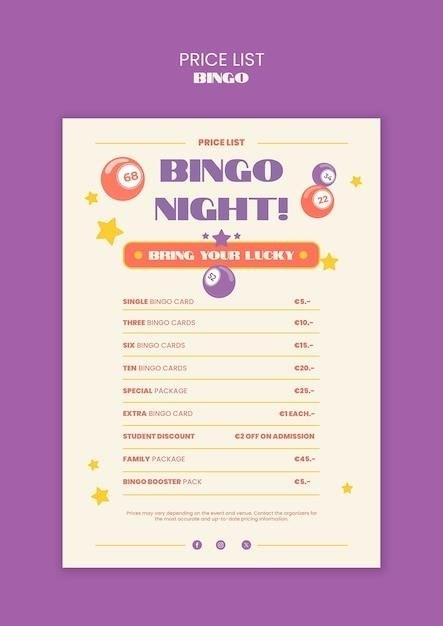Injection Molding Defects⁚ Causes and Remedies
Injection molding is a widely used manufacturing process for creating plastic parts. While it offers numerous advantages‚ it’s not without its challenges. Various factors can lead to defects in the final product‚ impacting its quality and functionality. Understanding the common injection molding defects‚ their causes‚ and potential remedies is crucial for achieving optimal results and ensuring product consistency.
Introduction
Injection molding is a versatile manufacturing process used to create a vast array of plastic parts. It involves injecting molten plastic into a mold cavity‚ where it cools and solidifies into the desired shape. While injection molding offers advantages such as high production rates‚ precise dimensional control‚ and complex part geometries‚ it’s not without its challenges. Defects can occur during the process‚ leading to variations in the final product’s quality and functionality. These defects can be attributed to various factors‚ including material properties‚ mold design‚ processing parameters‚ and environmental conditions.
Understanding the root causes of injection molding defects is essential for manufacturers to improve product quality‚ minimize waste‚ and optimize production efficiency. By identifying and addressing these defects‚ manufacturers can ensure that their products meet the required specifications and standards. This comprehensive guide explores common injection molding defects‚ their underlying causes‚ and practical remedies to prevent or minimize their occurrence.
Common Injection Molding Defects
Injection molding defects can manifest in various ways‚ affecting the appearance‚ functionality‚ and overall quality of the finished product. These defects can be categorized based on their characteristics and the underlying causes. Some common injection molding defects include⁚
- Jetting⁚ This defect appears as a thin‚ elongated line or streak on the part’s surface‚ often emanating from the gate. It occurs when molten plastic is forced through the gate at high velocity‚ creating turbulence and uneven flow.
- Discoloration⁚ A change in the part’s color from the original material color can indicate degradation of the plastic material. This can result from excessive injection speed‚ prolonged residence time in the barrel‚ or elevated melt temperature.
- Sink Marks⁚ These are depressions or indentations on the part’s surface‚ usually found in areas with thicker wall sections. Sink marks occur when the plastic material cools and shrinks more quickly than the surrounding material‚ creating a void.
- Flash⁚ Excess plastic material that spills out of the mold cavity‚ often along the parting line or mold inserts‚ is known as flash. It can result from excessive injection pressure‚ improper clamping force‚ or mold wear.
Jetting
Jetting is a common injection molding defect that appears as a thin‚ elongated line or streak on the surface of the molded part‚ often emanating from the gate. It’s characterized by a swirling pattern‚ resembling a jet of liquid. This defect arises due to turbulent flow of molten plastic through the gate‚ caused by high injection speeds or inadequate mold design.
Jetting occurs when the molten plastic is forced through the gate at a high velocity‚ causing turbulence and uneven flow. The high velocity of the molten plastic can also lead to material degradation‚ which can further exacerbate the problem. Inadequate mold or gate design can also contribute to jetting.
There are several ways to prevent jetting‚ including reducing injection speed‚ adjusting the mold design‚ and optimizing the gate location and size. Additionally‚ ensuring proper material selection and melt temperature control can minimize the risk of jetting.
Discoloration
Discoloration is a visual defect that manifests as a change in the color of the molded part compared to the original material color. This deviation from the expected hue can significantly impact the aesthetic appeal and potentially the functionality of the final product. Discoloration can arise from various causes‚ including material degradation‚ improper processing conditions‚ and contamination.
One common cause of discoloration is material degradation‚ which can occur due to excessive injection speed‚ prolonged residence time in the barrel‚ or high melt temperature. These factors can lead to the breakdown of the polymer chains‚ altering the material’s properties and causing color changes. Improper screw or runner system design can also contribute to material degradation by creating areas of high shear stress.
To address discoloration‚ it’s essential to optimize processing parameters‚ such as injection speed‚ melt temperature‚ and residence time. Ensuring proper material handling‚ storage‚ and drying can also prevent degradation. Moreover‚ selecting appropriate mold materials and designs that minimize shear stress can help maintain the material’s integrity and prevent color changes.
Sink Marks
Sink marks are indentations or depressions that appear on the surface of an injection-molded part‚ often in areas of thicker wall sections. These defects result from uneven cooling and shrinkage during the molding process‚ leading to localized depressions where the material has pulled away from the mold surface. Sink marks can significantly impact the aesthetic appeal and structural integrity of the part‚ especially in applications where surface finish is crucial.
Several factors can contribute to sink mark formation‚ including the thickness of the wall section‚ the material’s shrinkage rate‚ and the cooling rate of the mold. Thicker sections tend to cool more slowly‚ leading to greater shrinkage and a higher likelihood of sink marks. Materials with higher shrinkage rates are also more prone to this defect. Additionally‚ insufficient cooling time or cold mold temperatures can exacerbate the problem.
To prevent sink marks‚ several strategies can be employed. Optimizing the part design by reducing wall thickness variations and incorporating ribs or bosses for reinforcement can minimize the severity of sink marks. Selecting materials with lower shrinkage rates and ensuring adequate cooling time through proper mold temperature control and cycle time adjustments are essential. Employing techniques like back pressure and holding pressure during the injection process can also help prevent sink marks.
Flash
Flash is a common injection molding defect that appears as a thin‚ excess material that spills out of the mold cavity‚ usually along the parting line or around inserts. It occurs when molten plastic is forced into the mold cavity with excessive pressure or when the clamping force is insufficient to prevent the mold halves from separating during the injection process. Flash can negatively impact the part’s aesthetic appeal‚ functionality‚ and dimensional accuracy.
The causes of flash can be attributed to various factors‚ including excessive injection pressure‚ improper clamping force‚ mold wear‚ and poor mold design. High injection pressure can overcome the clamping force‚ forcing plastic out of the mold cavity. Insufficient clamping force can also lead to flash as the mold halves separate slightly during injection. Mold wear‚ such as wear on the parting line or inserts‚ can create gaps that allow plastic to escape. Finally‚ poor mold design‚ such as insufficient venting or uneven mold closure‚ can contribute to flash formation.
To mitigate flash‚ several solutions are available. Fine-tuning the injection pressure and clamping force can often resolve the issue. Regular mold inspection and maintenance are crucial to identify and address wear or damage. Optimizing the mold design‚ including proper venting and ensuring a tight mold closure‚ can also prevent flash. Additionally‚ using mold release agents can help reduce friction and prevent plastic from sticking to the mold surface.
Short Shots
Short shots are a common defect in injection molding‚ characterized by incomplete filling of the mold cavity. This results in a part that lacks material in specific areas‚ often leaving noticeable voids or thin sections. Short shots can significantly compromise the part’s strength‚ functionality‚ and aesthetics‚ rendering it unusable.
The causes of short shots are multifaceted‚ stemming from issues related to the injection molding process‚ material properties‚ and mold design. Insufficient injection pressure‚ inadequate injection speed‚ or a short injection time can prevent the molten plastic from filling the mold cavity completely. High melt viscosity‚ caused by factors like low melt temperature or inappropriate material selection‚ can also hinder the flow of plastic into the mold. Additionally‚ a small gate size‚ restrictive runners‚ or a complex mold design with sharp corners can restrict the flow of plastic‚ leading to short shots.
Addressing short shots requires a systematic approach to identify and rectify the underlying causes. Increasing injection pressure‚ adjusting injection speed‚ and extending the injection time can improve material flow. Optimizing melt temperature and selecting a material with appropriate flow properties can enhance the melt’s fluidity. Ensuring a sufficient gate size‚ optimizing runner design‚ and simplifying the mold design with rounded corners can facilitate smooth plastic flow. It’s crucial to analyze the specific situation and implement the most suitable remedies to achieve complete mold filling and eliminate short shots.
Weld Lines
Weld lines‚ also known as flow marks‚ are visible lines or ridges that appear on the surface of an injection molded part. They occur when two streams of molten plastic meet and merge during the filling process. While the plastic eventually fuses together‚ the point of convergence often leaves a noticeable mark‚ impacting the part’s aesthetic appeal and potentially affecting its structural integrity. Weld lines can occur in various locations‚ including the parting line of the mold‚ at sharp corners‚ and where material flow is restricted.
The formation of weld lines can be attributed to several factors‚ including the injection molding process‚ material properties‚ and mold design. Insufficient injection pressure‚ a slow injection speed‚ or an extended injection time can lead to delayed merging of plastic fronts‚ resulting in more prominent weld lines. High melt viscosity‚ caused by low melt temperature or the use of a material with poor flow properties‚ can also contribute to the formation of weld lines. Additionally‚ a small gate size‚ restrictive runners‚ or a mold design with sharp corners can hinder the smooth flow of plastic‚ leading to weld line formation.
Addressing weld lines requires a combination of adjustments to the injection molding process‚ material selection‚ and mold design. Increasing injection pressure‚ optimizing injection speed‚ and reducing injection time can promote faster and more efficient merging of plastic fronts. Selecting a material with good flow properties and ensuring an appropriate melt temperature can enhance the fluidity of the plastic‚ reducing the likelihood of weld line formation. Modifying the mold design to include larger gates‚ wider runners‚ and rounded corners can facilitate smoother material flow‚ minimizing the occurrence of weld lines.
Flow Marks
Flow marks‚ also known as “weld lines‚” are visible lines or ridges that appear on the surface of an injection molded part. They occur when two streams of molten plastic meet and merge during the filling process. While the plastic eventually fuses together‚ the point of convergence often leaves a noticeable mark‚ impacting the part’s aesthetic appeal and potentially affecting its structural integrity. Flow marks can occur in various locations‚ including the parting line of the mold‚ at sharp corners‚ and where material flow is restricted.
The formation of flow marks can be attributed to several factors‚ including the injection molding process‚ material properties‚ and mold design. Insufficient injection pressure‚ a slow injection speed‚ or an extended injection time can lead to delayed merging of plastic fronts‚ resulting in more prominent flow marks. High melt viscosity‚ caused by low melt temperature or the use of a material with poor flow properties‚ can also contribute to the formation of flow marks. Additionally‚ a small gate size‚ restrictive runners‚ or a mold design with sharp corners can hinder the smooth flow of plastic‚ leading to flow mark formation.
Addressing flow marks requires a combination of adjustments to the injection molding process‚ material selection‚ and mold design. Increasing injection pressure‚ optimizing injection speed‚ and reducing injection time can promote faster and more efficient merging of plastic fronts. Selecting a material with good flow properties and ensuring an appropriate melt temperature can enhance the fluidity of the plastic‚ reducing the likelihood of flow mark formation. Modifying the mold design to include larger gates‚ wider runners‚ and rounded corners can facilitate smoother material flow‚ minimizing the occurrence of flow marks.
Burn Marks
Burn marks‚ also known as scorch marks‚ are dark‚ discolored areas that appear on the surface of an injection molded part. They are a result of excessive heat exposure during the molding process‚ causing the plastic material to degrade and change color. These marks are often a sign of overheating and can negatively impact the part’s aesthetics and potentially its mechanical properties.
Burn marks can arise from various causes‚ including improper processing parameters‚ faulty equipment‚ or material issues. Excessive melt temperatures‚ prolonged residence time in the barrel‚ or insufficient venting can all contribute to the development of burn marks. If the heating elements within the injection molding machine malfunction‚ they can cause localized overheating‚ leading to burn marks on the part. Material degradation due to excessive heat exposure‚ or the presence of impurities in the plastic material‚ can also result in burn marks.
Preventing burn marks requires a comprehensive approach involving process adjustments‚ equipment maintenance‚ and material selection. Maintaining optimal melt temperatures‚ minimizing residence time in the barrel‚ and ensuring adequate venting can help mitigate the risk of overheating. Regularly inspecting and maintaining the heating elements of the injection molding machine is essential to prevent malfunction and ensure consistent heating. Selecting high-quality materials with low degradation rates and ensuring proper material handling can further minimize the occurrence of burn marks.

Warpage
Warpage is a common defect in injection molding‚ characterized by a distortion or bending of the molded part from its intended shape. It occurs when the part cools unevenly‚ resulting in internal stresses that cause the part to warp or bend. Warpage can significantly impact the functionality and aesthetics of a part‚ especially in applications where dimensional accuracy and flatness are critical.

The causes of warpage are multifaceted‚ often stemming from a combination of factors related to the part design‚ mold design‚ and processing parameters. Uneven wall thicknesses in the part design can lead to uneven cooling rates‚ contributing to warpage. Improper mold design‚ such as insufficient venting or uneven cooling channels‚ can exacerbate the problem. Processing parameters like injection speed‚ holding pressure‚ and cooling time can also play a significant role. High injection speeds‚ excessive holding pressures‚ or inadequate cooling times can all contribute to warpage.
Addressing warpage requires a multi-pronged approach. Optimizing the part design to ensure uniform wall thicknesses and incorporating ribs or other structural features to enhance rigidity can help. Improving the mold design by adding venting to promote uniform cooling and adjusting the cooling channel configuration to ensure even heat dissipation can also be effective. Adjusting processing parameters‚ such as reducing injection speed‚ holding pressure‚ and increasing cooling time‚ can further minimize warpage. Careful material selection‚ choosing materials with low shrinkage rates and good dimensional stability‚ can also contribute to reducing warpage tendencies.
Cracking/Crazing
Cracking and crazing are surface defects that can occur in injection molded parts‚ often presenting as fine hairline cracks or a network of small cracks on the surface. These defects can compromise the structural integrity and aesthetic appeal of the part. While they may not always be immediately visible‚ they can weaken the part and create stress points‚ potentially leading to premature failure.
Several factors can contribute to cracking and crazing. One common cause is the presence of internal stresses within the part‚ which can arise from uneven cooling during the molding process. Thick wall sections‚ especially when adjacent to thin sections‚ can cool at different rates‚ creating internal stresses that can lead to cracking. The use of high shrinkage materials can also contribute to stress formation and cracking. Improper mold design‚ such as insufficient venting or sharp corners‚ can further exacerbate the problem.
Addressing cracking and crazing requires a multifaceted approach. Optimizing the part design by minimizing thick wall sections and incorporating gradual transitions between different thicknesses can help reduce internal stresses. Improving the mold design by adding venting to facilitate uniform cooling and rounding sharp corners to reduce stress concentrations can also be beneficial. Choosing materials with low shrinkage rates and good dimensional stability can further contribute to reducing cracking tendencies. Finally‚ adjusting processing parameters‚ such as reducing injection speed and holding pressure‚ can help minimize stress formation during the molding process.




























